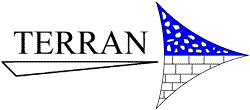Terran Corporation has the experience and tools to determine the extent and impact of salt or brine releases and treat the contamination above and below the water table.
The storage and transport of road salt and liquid brines can lead to accidental spills and releases or run-off issues due to improper or insufficient management. Salt is extremely soluble and can contaminate surface soils and ultimately groundwater by dissolving in and infiltrating with precipitation. The issue of contaminated drinking water wells from salt intrusion is becoming more common. Another major source of salt contamination is the release of produced water from oil production. Heavy brine water separated from the oil pumped from a well field can contaminate soil and possibly groundwater if not treated promptly. Due to increased oil production in areas with valuable aquifers, the need to quickly manage any salt contamination is becoming imperative.
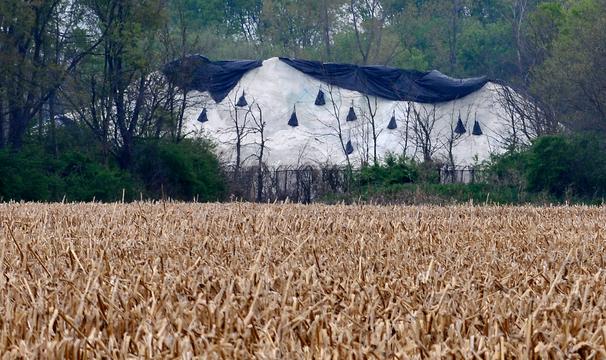
Improper salt storage.
Salt and Brine Investigation Techniques
Terran has provided salt and brine investigation services employing several basic and advanced techniques and has the capability to apply a wide range of geophysical testing and analysis. Basic tools include pump tests, geochemical analysis and soils test to determine the relative extent of contamination. Advanced techniques, such as resistivity or electromagnetic mapping, can be used to more clearly define impacted areas.
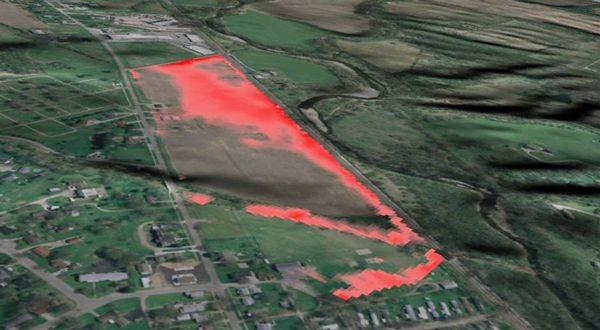
Red indicates salt contamination from a source (near top of image) following trenches and a railroad culvert heading toward municipal well field (near the bottom of the image).
Evaluation and Management of Salt and Brine
Once a release has been identified and investigated, Terran can evaluate the technical and regulatory options available to most effectively manage the issue. Chloride has a secondary MCL (maximum contamination level) or SMCL in groundwater while sodium has no federal limit. However, agencies are evaluating sodium for health reasons and are considering sodium limits, and even reducing chloride limits. Future sodium limits can impact today’s risks.
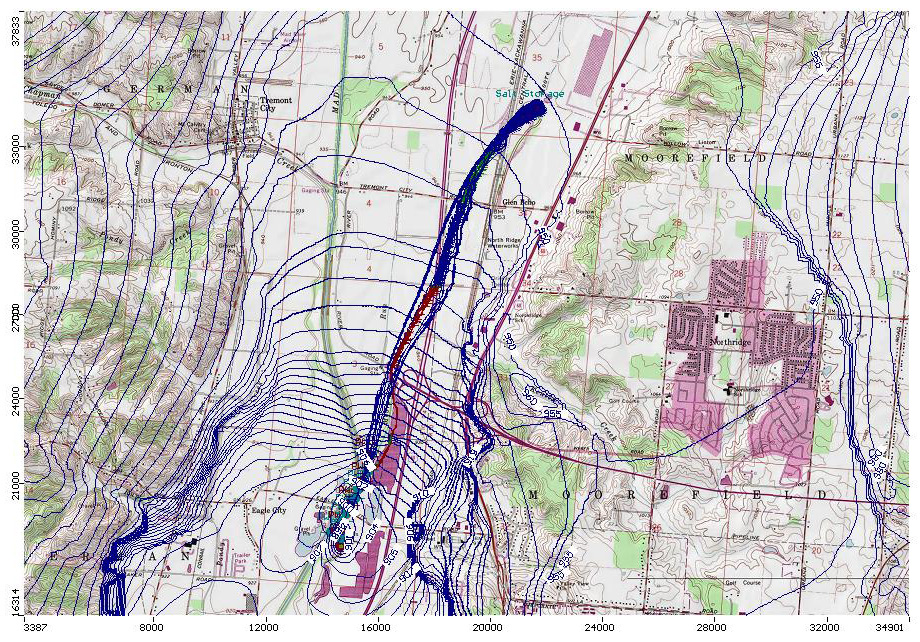
Particle tracking model output showing salt heading to production wells.
Salt and Brine Remediation
Full site evaluations are made regarding the best remedial options. Technologies such as excavation, capping, electrokinetic extraction, soil washing and soil flushing may be appropriate, depending on site conditions and locations. Some sites may be suitable for a combination of technologies.
Electrokinetic-Extraction of Salt
Terran has developed and patented an innovative method of removing chloride and sodium ions electrochemically. By carefully applying a direct current (DC) electrical field, the ionic contaminants migrate toward the opposite electrode. Chloride ions are negatively charged and move steadily toward the anode or positive electrode (terminal), while sodium is positively charged and moves toward the cathode, or negative electrode (terminal). The rate of movement is determined primarily by the electrical field strength and is not impacted by soil conditions. A series of anodes and cathodes are installed in the contaminated area and are connected to a DC power supply (rectifier, solar panels or wind turbines). The chloride and sodium rich solutions are removed and combined in a brine storage tank for proper disposal or reuse. The electrode parts and extraction equipment consist of off-the-shelf materials to keep costs low.
Terran Experience with Salt Contamination
Confidential Client: Terran investigated the source and extent of chloride contamination to a wellfield in the Midwest. The investigation traced chloride contamination back to source areas that historically were used to store road salt. Terran subsequently developed work plans for state agency review and approval, along with remedial alternatives for the abatement of residual chloride contamination in shallow soils.
Confidential Client: Terran assisted in evaluating the extent and concentration of chloride contamination in several private residential wells as part of a legal action filed against a property management company. The results indicated bulk road salt storage at one of the property management facilities was the source.
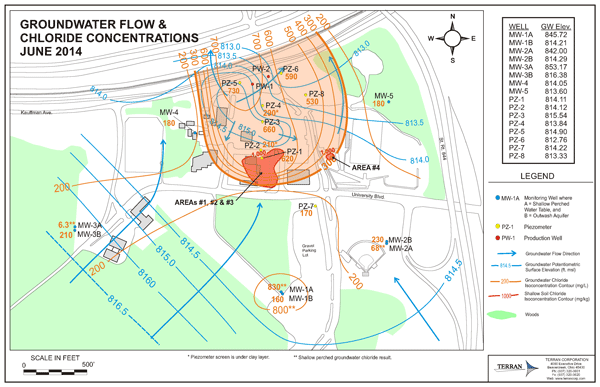
Map showing road salt source area, chloride contamination and groundwater flow.
Groundwater Modeling: Terran has modeled the fate and transport of the chloride anion in groundwater for purposes of impact evaluation to receptors caused by salt-borne contamination. Fate and transport modeling provides desktop tools to evaluate natural attenuation, potential impact to receptors, and remedial measures design and time-of-completion estimates. Fate and transport modeling evaluate the concentration, longevity and destination of chemical contaminants in a groundwater flow system, including factors such as source loading, dilution, retardation, chemical degradation and other factors that influence the rate, concentration and extent of contaminants in groundwater.
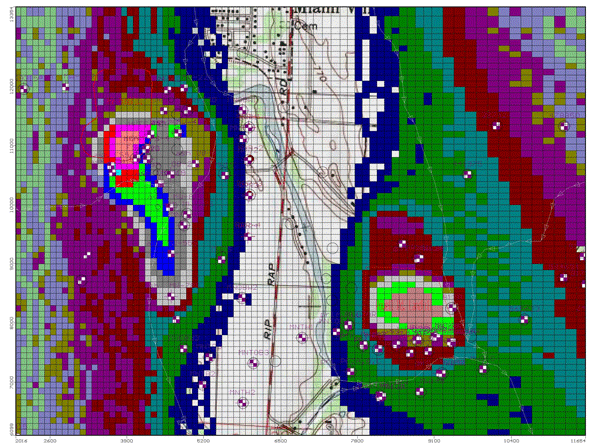
Source area definitions for chloride fate and transport model.
Utility Pipe Corrosion: Terran used chloride, as part of parking lot deicing salt, to trace the source of infiltration into an underground electrical utility chase-way. Conductivity and chloride analysis along with camera-scoping of the pipe helped determine where the entry points were located.
Municipal Well Contamination and Replacement: Terran verified a salt storage transfer facility as the source of contamination of a municipal well field. The extent of the source area and pathways to the wells were determined using various sampling and geophysical techniques including field EM mapping. Terran determined the best location for a replacement production wellfield for the community and assisted in its installation, testing and permitting.
Electrokinetic Remediation at a Brine Spill Site: In North Dakota, a produced water pipeline fractured and released about 500 barrels of high salinity brine fluid into a sensitive wetlands area. EK desalinization was selected as the best alternative for remediation. This presentation shows the latest results for our field scale demonstration of our patented electrokinetic desalinization process employed to treat brine contaminated soils in a delicate environment.
EK desalinization is also being considered on a second brine release in ND where excavation is not practical. This location is not saturated and the soil is a sandy silt. Terran is optimizing the EK method for these conditions.
Terran Contacts:
Chris Athmer cjathmer@terrancorp.com or Kelly Smith kcsmith@terrancorp.com
Or call us at 937-320-3601.
